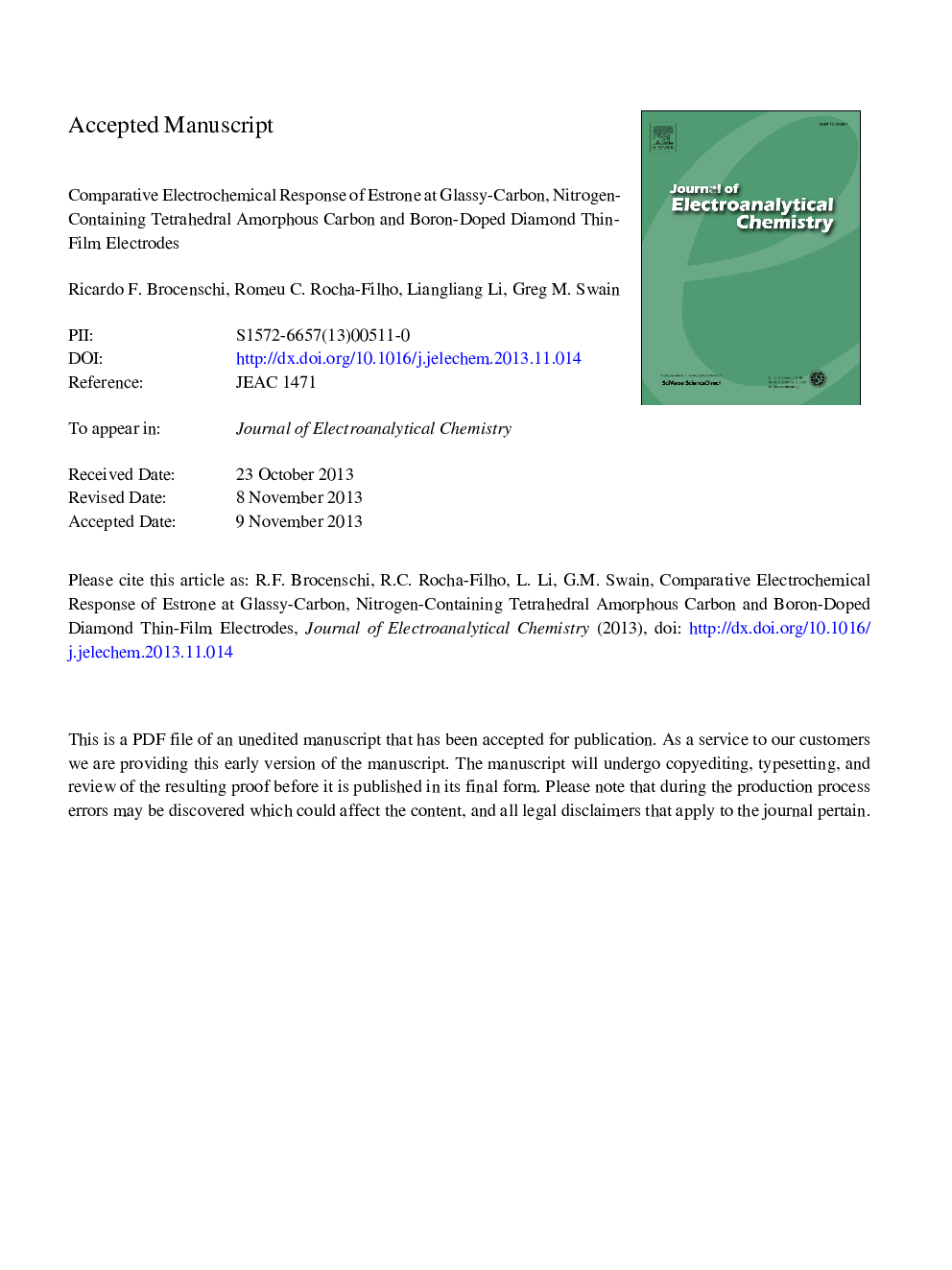| کد مقاله | کد نشریه | سال انتشار | مقاله انگلیسی | نسخه تمام متن |
|---|---|---|---|---|
| 6662788 | 463226 | 2014 | 31 صفحه PDF | دانلود رایگان |
عنوان انگلیسی مقاله ISI
Comparative electrochemical response of estrone at glassy-carbon, nitrogen-containing tetrahedral amorphous carbon and boron-doped diamond thin-film electrodes
ترجمه فارسی عنوان
پاسخ الکتروشیمیایی استرونی در کربن شیشه ای کربن، حاوی نیتروژن حاوی کربن آمورف چهار تایی و الکترودهای نازک الماس بور
دانلود مقاله + سفارش ترجمه
دانلود مقاله ISI انگلیسی
رایگان برای ایرانیان
کلمات کلیدی
الکترودهای الماس، الکترودهای کربن آمورف تیتانامیک، اکسیداسیون استرون، کیفیت آب،
موضوعات مرتبط
مهندسی و علوم پایه
مهندسی شیمی
مهندسی شیمی (عمومی)
چکیده انگلیسی
The anodic oxidation of estrone was comparatively investigated at glassy carbon (GC), nitrogen-incorporated tetrahedral amorphous carbon (ta-C:N) and boron-doped diamond (BDD) electrodes. The ta-C:N and BDD electrodes are characterized by a wider working potential window and lower background current that for GC. The latter is because of a reduced level of pseudocapacitance on the former electrodes due to the absence of significant levels of redox-active surface carbon-oxygen functionalities. The irreversible oxidation of estrone was recorded at a similar potential for all three electrodes (0.9-0.95 V) in 0.5 mol Lâ1 H2SO4. The voltammetric peak current decreased some for all the electrodes with potential cycling suggestive of some response attenuation by reaction product adsorption (or slow desorption). From the dependence of the oxidation peak potential and current with solution pH, it was possible to conclude that the electrooxidation of estrone involves the transfer of two electrons accompanied by the loss of two protons at pH < 10. Voltammetric and chronocoulometric data indicated the oxidation reaction kinetics on all three electrodes were under mixed control by both diffusion and adsorption. This was most apparent for GC where estrone adsorption was greatest (145 pmol cmâ2). The greater adsorption on GC can be explained by electronic and or chemical effects associated with the graphitic edge plane sites. In contrast, the estrone adsorption on ta-C:N and BDD was significantly lower, about 1/10 of that on GC. This behavior is due to the differences in the types and density of functional groups and the absence of an extended Ï-electron system in both materials. In summary, the here-reported properties of the ta-C:N and BDD electrodes suggest that both could be excellent candidates for electroanalytical measurements involving the detection and/or determination of estrone and similar hormones.
ناشر
Database: Elsevier - ScienceDirect (ساینس دایرکت)
Journal: Journal of Electroanalytical Chemistry - Volume 712, 1 January 2014, Pages 207-214
Journal: Journal of Electroanalytical Chemistry - Volume 712, 1 January 2014, Pages 207-214
نویسندگان
Ricardo F. Brocenschi, Romeu C. Rocha-Filho, Liangliang Li, Greg M. Swain,
